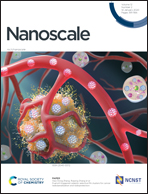Support interactions dictated active edge sites over MoS2–carbon composites for hydrogen evolution†
Abstract
The rational design and synthesis of MoS2-based electrocatalysts with desirable active sites for the hydrogen evolution reaction have been actively pursued. Herein, we demonstrate a microwave-assisted steam heating method for the rapid and efficient synthesis of lamellar MoS2-based materials with favorable exposed active edge sites. Based on this new strategy, we have further separately introduced reduced graphene oxide (rGO) and carbon nanotubes (CNTs), two typical carbon allotropes widely used to boost the electrocatalytic activity of MoS2, to comparatively assess the support interactions and their effects on the electrocatalytic activity of MoS2. It was found that as compared to rGO, the CNTs afford favorable support interactions, which not only benefit to suppress the oriented in-plane growth of MoS2 to maximize the exposed edge sites but also ensure the maintainence of their intrinsic activity, thereby synergistically facilitating the exertion of the potential of MoS2 for HER. Our work conceptually highlights the importance of the support interactions for taming the active edge sites of MoS2 and is expected to inspire the rational design of layered metal dichalcogenide-based electrocatalysts with favorable active edges for HER.



 Please wait while we load your content...
Please wait while we load your content...